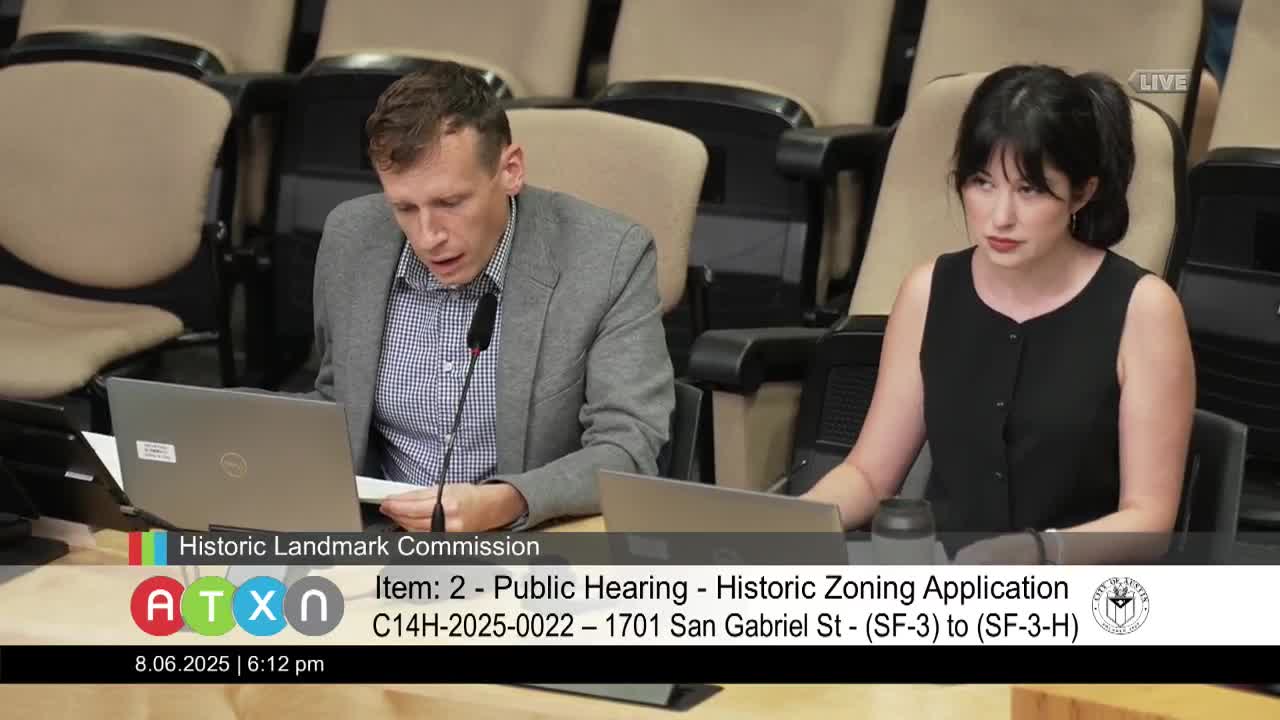Austin Approves Zoning Change for Historic Graves Home Restoration in Judges Hill
August 06, 2025 | Austin, Travis County, Texas
This article was created by AI summarizing key points discussed. AI makes mistakes, so for full details and context, please refer to the video of the full meeting. Please report any errors so we can fix them. Report an error »

In the heart of Austin's Judges Hill neighborhood, a historic home at 1701 San Gabriel stands as a testament to architectural elegance and cultural significance. Designed in 1927 by the renowned architect Edwin K. Bridal, this colonial Georgian residence was built for Judge Ireland Graves and his wife, Mary Stedman Graves. Its striking features, including a gable roof, prominent dormers, and a classical front porch, reflect the distinctive style that Bridal mastered throughout his career.
Bridal, who collaborated on significant projects such as the first federally funded public housing project in the United States, is celebrated for his contributions to Austin's architectural landscape. His work includes over 1,000 residences and various public buildings, ensuring that the character of his designs harmonized with the neighborhoods they served. The home at 1701 San Gabriel is not just a structure; it embodies the legacy of a community and its historical figures.
Judge Ireland Graves, a prominent legal figure and lecturer at the University of Texas Law School, played a pivotal role in Texas's legal history, notably through his involvement in the Tidelands case, a significant legal battle over offshore oil rights. His wife, Mary, was equally influential, being an active member of various civic organizations, including the American Association of University Women and the Austin Women's Club.
During a recent government meeting, city staff recommended a zoning change for the property, advocating for its designation as a historic combining district. This change would recognize the home's architectural and historical importance, ensuring its preservation for future generations. The proposal was met with support from the community, with architect Sean Reynolds, who worked on the home's restoration, voicing his enthusiasm for the project.
As discussions continue, the fate of this historic landmark hangs in the balance, symbolizing not only the architectural beauty of Austin but also the rich tapestry of its history and the people who shaped it. The outcome of this zoning change could pave the way for further recognition and preservation of Austin's architectural heritage, inviting residents and visitors alike to appreciate the stories that these historic homes tell.
Bridal, who collaborated on significant projects such as the first federally funded public housing project in the United States, is celebrated for his contributions to Austin's architectural landscape. His work includes over 1,000 residences and various public buildings, ensuring that the character of his designs harmonized with the neighborhoods they served. The home at 1701 San Gabriel is not just a structure; it embodies the legacy of a community and its historical figures.
Judge Ireland Graves, a prominent legal figure and lecturer at the University of Texas Law School, played a pivotal role in Texas's legal history, notably through his involvement in the Tidelands case, a significant legal battle over offshore oil rights. His wife, Mary, was equally influential, being an active member of various civic organizations, including the American Association of University Women and the Austin Women's Club.
During a recent government meeting, city staff recommended a zoning change for the property, advocating for its designation as a historic combining district. This change would recognize the home's architectural and historical importance, ensuring its preservation for future generations. The proposal was met with support from the community, with architect Sean Reynolds, who worked on the home's restoration, voicing his enthusiasm for the project.
As discussions continue, the fate of this historic landmark hangs in the balance, symbolizing not only the architectural beauty of Austin but also the rich tapestry of its history and the people who shaped it. The outcome of this zoning change could pave the way for further recognition and preservation of Austin's architectural heritage, inviting residents and visitors alike to appreciate the stories that these historic homes tell.
View full meeting
This article is based on a recent meeting—watch the full video and explore the complete transcript for deeper insights into the discussion.
View full meeting
